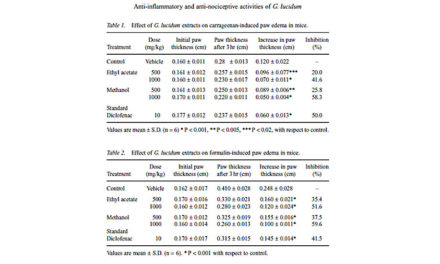Guilherme Sabadin Piva1, Thiago André Weschenfelder1, Elton Franceschi2, Rogério Luis Cansian1, Natalia Paroul1
and Clarice Steffens1*
Department of Food Engineering, URI Erechim, Av. Sete de Setembro 1621, 99700-000, Erechim, RS, Brazil2 Colloidal System Research Center (NUESC), Research and Technology Institute (ITP), Tiradentes University (UNIT), 49032-490, Aracaju, SE, Brazil
1Department of Pediatrics: Jaffe Food Allergy Institute, Icahn School of Medicine at Mount Sinai, New York, NY 100292Department of Pediatrics: Division of Gastroenterology, Icahn School of Medicine at Mount Sinai, New York, NY 10029
SUMMARY
This work aims at characterizing linseed oil obtained using different extraction methods (hexane, subcritical propane and pressurized ethanol), and comparing the results with commercial linseed oil extracted by cold mechanical press method. An experimental design helped to evaluate temperature and pressure effects on the oil extraction using propane and ethanol. Gas chromatography assisted in evaluating the essential fatty acids. There were no significant differences among the ω-3, 6 and 9 fatty acids from linseed oil obtained using the different extraction methods. Only the acidity of linseed oil extracted by subcritical propane (0.956 %) showed significant differences among the physicochemical parameters. Extraction using organic solvent (Soxhlet) gave a 36.12 % yield. Extraction using subcritical propane at 107 Pa and 40 °C for 1.5 h gave a better yield (28.39 %) than pressurized ethanol (8.05 %) under similar conditions. Linseed oil extraction using subcriti-
cal propane was economically viable, resulting in a 124.58 US$/L product cost. The results present subcritical propane extraction as a promising alternative for obtaining linseed oil at mild temperature and pressure conditions, without losing quality and quantity of fatty
acids such as ω-3, 6 and 9.
Key words: linseed oil, fatty acids, extraction yield, extraction methods, oil quality







